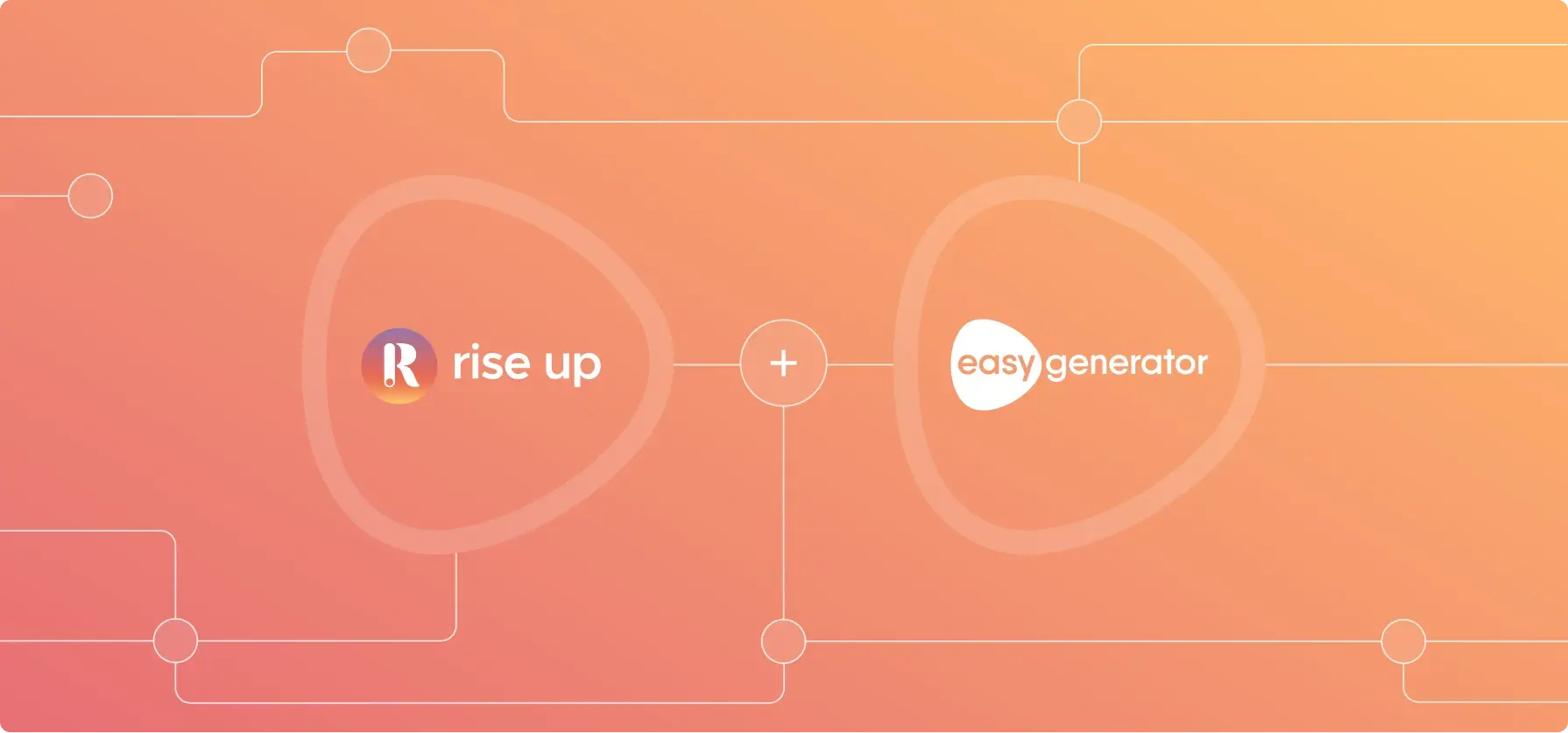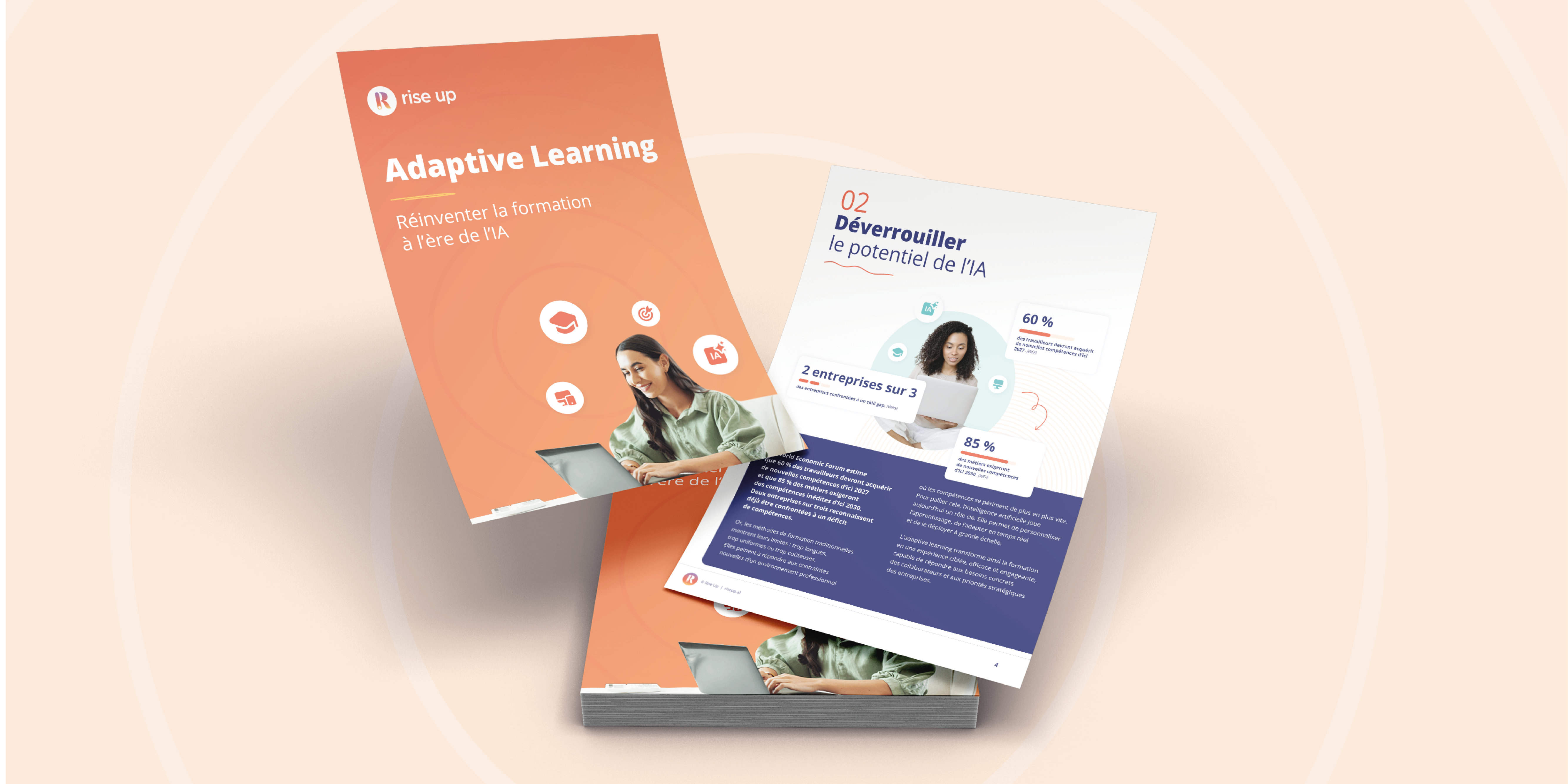Top tips for creating an e-learning programme that suits your business
12 minutes of reading | 2022-07-08
Learning and development in the workplace is undergoing a rapid and substantive transformation, with traditional forms of training being supplanted by e-learning and other similar methods. This shift, already underway for some time, was accelerated by the global pandemic, with 70% of UK businesses reporting increased use of digital learning solutions and 36% investing more in new technologies.
This trend should be seen as both a challenge and an opportunity for organisations of all sizes. E-learning can be a real asset amidst an atmosphere of new technological developments, changing working patterns and uncertain economic conditions.
Nonetheless, creating training content that perfectly suits your company’s needs and characteristics isn’t always easy. Here, we’ll show you some top tips for creating an e-learning course that’s tailored to your business.
Define your objectives
Before beginning the process of creating your e-learning content in earnest, you need to understand where you’re starting from. To do so, you should carry out a thorough analysis of your company’s training needs. You’ll also need to be aware of the resources available to you, which will vary depending on your industry and the size of your business.

Identify what each employee needs
Getting learners to stick with your training programme for the long haul isn’t always easy. This is especially true of those working remotely. You need to be sure that the benefits of the course are clear and easy to understand, or you risk high dropout rates.
With this in mind, you should make sure that your e-learning course is adapted to meet employees’ needs. Only by creating educational content that matches the expectations of your learners can you be confident that they’ll feel engaged and committed.
The first step to creating relevant content is identifying what learners actually need. This may include training related to:
- New software that the business has just acquired
- Amendments to any regulations or laws affecting the company
- Changes to internal company processes
- Skill gaps identified during assessments
Draw up a skills development plan
Now that you have an understanding of each employee’s existing abilities, it’s time to create a skills development plan to help them reach the next level. This should consist of all the training the individual will undertake over the course of the following year, and will reflect both their own needs and those of the company.
A proper skills development plan will take into account the employee’s strengths and weaknesses, as well as opportunities for growth. It will also take into account SMART goals that can be easily measured over the specified time period.
Your plan can also be used to determine which aspects of your training programme are legal requirements, which are requested by management in anticipation of future changes or objectives, and which have been chosen by the employee themselves. In the latter case, a rich catalogue of e-learning content is essential.
What are SMART goals?
When drawing up a skills development plan, it can be all too easy to set nebulous targets that cannot be tracked. Worse still, your team may not realise what exactly they need to do to reach them. That’s why SMART goals are so useful. The SMART method can help you to formulate clear, obtainable goals that your employees can meet and that your business can assess.
The SMART method consists of writing goals which are:
- Specific: the skills to be gained are not vague or generic, but are instead clearly defined.
- Measurable: specify the evaluation methods to be used for each skill, as well as the criteria that each employee will be assessed against.
- Achievable: targets set should be ambitious, but not unrealistic. Employees should be able to reach the given skill level within the set time period.
- Relevant: the goals should serve to help meet business and/or personal development objectives. This helps to avoid wasted training time.
- Timely: include a deadline by which the targets should have been met, and determine whether the goal is to be reached over the short, medium or long term. ‘Checkpoints’ may also be used.
Set your training budget
A crucial aspect of any training programme is being able to fund it. It’s likely that your business will already have a particular budget set aside for learning and development, and this will dictate how much you are able to spend on software, new tech, human resources, and so on.
If you’re a small business, you may be eligible to apply for grants that can then be invested into your training programme, and which can therefore facilitate long-term growth. If you’re interested in applying for funding, be sure to check out:
- The UK Government’s list of finance and support for businesses
- The Grants Hub, which breaks down available funding by location and sector
- Your local Growth Hub, which lists grants available regionally across England
- Scottish Enterprise for businesses in Scotland
- Business Wales, provided by the Welsh Government
- NI Business Info for grants in Northern Ireland
Apps and software
With a solid idea of your business’ goals, the skills each employee will need to gain, and the budget you have to work with, you’re ready to move onto the next step: deciding on your tools. We’ll run through our tips regarding both LMS platforms and other useful software for creating e-learning content.
Choosing an LMS platform
Being in charge of learning and development necessarily means balancing competing needs: those of each employee and those of management. Nowadays, it also entails handling a combination of in-person and remote training, as well as a dizzying array of available modules. This can make for a highly complex set of tasks in even the smallest of organisations.
It’s for this reason that learning management systems have seen soaring popularity in recent years. Today, LMS platforms now act as a one-stop-shop by which training managers and business owners can:
- Manage each employee’s course from start to finish
- Create individually tailored, engaging e-learning content
If your business hasn’t yet taken advantage of the benefits of an LMS, then now’s the time to get on board. To help make your decision easier, check out our article covering what you need to know before choosing an LMS platform.

E-learning content authoring tools
While LMS platforms offer a large selection of features, using additional apps and software can help you to take your e-learning content to the next level. There’s no shortage of tools on offer, including both web and desktop apps, meaning that you’ll be able to find the ones that are ideally suited to your business and its employees.
Be aware that not all tools offer the same functionality. Be sure to check that your chosen software includes:
- A comprehensive user manual or tutorial section
- Customer service that is easy to access and readily available
- The option to include interactive content, such as webinars, quizzes and gamified modules
Above all, the ‘right’ software for your business is whatever offers you the perfect combination of ease-of-use and rich content. For some of our recommendations, take a look at our article covering essential tools for creating an e-learning course.
Design your e-learning course
It’s finally time to start creating e-learning content that suits your business. An important part of this is mapping out the path learners will take as they complete each successive module. This will enable you to ensure coherence throughout the course and address the given topic in depth.
As part of this process, you’ll need to be able to distinguish between:
- The core competences that will need to be covered as a priority
- Secondary or supplementary topics, and the order in which these will be dealt with
This step will rely on the information you gathered during the earlier analysis phase, as well as on your employees’ skills development plans. Using these details, you’ll be able to create a course with a clear unifying thread and which enables learners to make steady progress.
Creating tailored content
If your course is made up solely of one type of module, it’s likely that your learners will quickly get bored and may be reluctant to complete their training. A variety of learning methods should therefore be used to keep engagement levels high.
There are plenty of options to choose from in this area, and you can focus on the ones that are best suited to your target audience as well as the broader company culture. Some examples include:
- Text-based content, including articles, blog posts, manuals or e-books, and which is one of the most common forms of e-learning material.
- Audio-visual content, which can help to stimulate learners and are particularly useful for grabbing attention at the beginning of your course. Be wary, however, of using overly long videos or audio files that can prevent employees from fully absorbing the topic.
- Games, activities and challenges that make the learning process more fun, and which can be used to check if knowledge has been fully acquired.
A mix of these different methods can help to boost the chances that learners will really take in new information and gain skills more effectively.
Testing out your new modules
Before rolling out your e-learning course, you need to check if it’s fit for purpose. To do so, select a representative sample of employees and ask them to complete the training under real-world conditions. You can then give them a questionnaire to gauge their satisfaction with each module and ask if there are any areas for improvement.
Analysing the effectiveness of your course
The end goal of any training programme is to ensure that learners actually understand the topic and can apply their new skills on the job. A variety of statistics may be used to measure this, including participation levels, assessment scores, and retention rates.
To properly ascertain whether your employees have truly retained the information, you should carry out:
- An initial assessment, carried out just as the learners finish their course
- A follow-up assessment several weeks or months later to check whether their knowledge is still intact
Additionally, your LMS will provide you with reams of data covering virtually every aspect of your employees’ training experience. It can also help you to visualise all of this easily by generating dashboards, charts and graphs. This is invaluable to understanding your team’s preferences and the ways in which they learn.
Using the data provided by your LMS, you can work out which modules your team liked the most and the least. This can be further supplemented by feedback solicited directly from learners. You can then go on to adapt or amend any content that was not as effective as hoped so as to improve the course moving forward.
E-learning courses are ideally suited to workplace training in today’s environment, but proper thought needs to be put into designing courses that meet your business’ individual requirements. With the right tools and planning, you can create effective e-learning content that will help your organisation to achieve its objectives.






